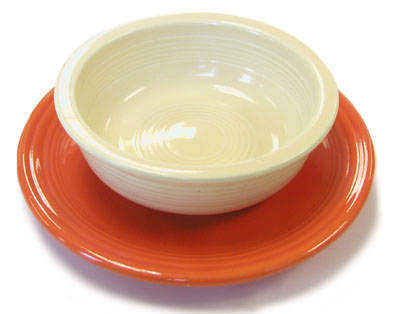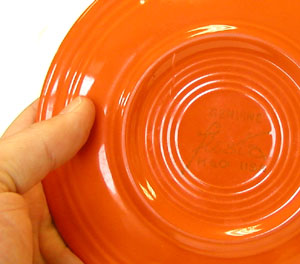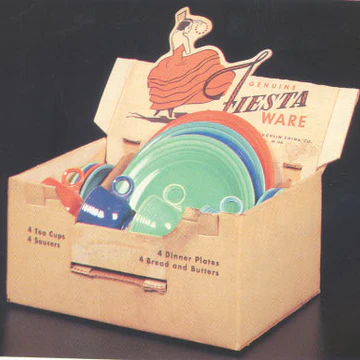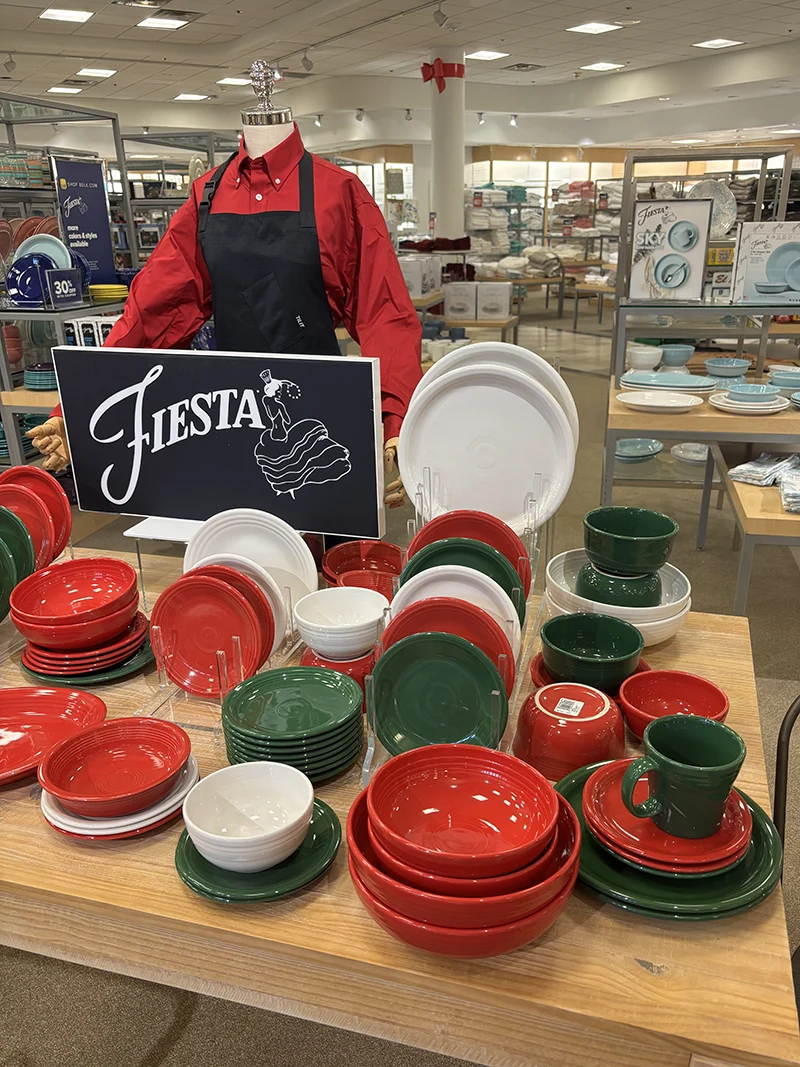
Two pieces of Fiestaware: A fiesta red saucer and an ivory bowl.
Dinnerware may not be the most exciting thing in your kitchen, but if a dinner plate could evoke any kind of reaction, it would probably be a piece of vintage Fiestaware. Its color is so vibrant it seems to leap off the table, although fascination with the dinnerware goes far beyond its eye-catching hues. These vintage pieces of crockery are literally radiant, and the reason behind this is as fascinating as it is unexpected: uranium.
Yes, you read that right. Uranium, the element used in atomic bombs and in nuclear reactors, played a pivotal role in the creation of some of the most vibrant Fiestaware colors. Paul Frame, Ph.D., retired ORAU health physicist and former director of ORAU’s Professional Training Programs, has collected many uranium-containing items including Fiestaware for ORAU’s Museum of Radiation and Radioactivity. Let’s dive into the fascinating world of Fiestaware, a tale that is as colorful as the dishes themselves and has a bit of an atomic twist.
Fiestaware was introduced in 1936 by the Homer Laughlin China Company, with the initial palette of red, blue, green, ivory, and yellow. However, Fiestaware wasn't just about dining - it was about making a statement. The specific shade of red, known as “Fiesta red,” became an instant hallmark of the brand.
A Fiestaware saucer in Fiesta red with the Fiesta inscription on the back.
The use of uranium oxide was not limited to the red glaze; it was a component in all the glazes within the collection. However, the Fiesta red required special care during the ceramic firing process due to the higher amount of uranium oxide needed to enrich its shade. According to Frame, measurements taken have estimated that up to 14% of the 0.2mm-thick glaze was comprised of uranium by weight. Though there is a higher concentration of uranium oxide, the plates are considered safe for use unless chipped or cracked, where the risk of exposure increases. Despite the risk, Fiestaware graced the tables of many U.S. homes in the early-to-mid 20th century.
However, World War II marked a turning point for Fiestaware and the consumer-favorite shade. The Atomic Energy Act of 1946 (.PDF) ceased the private or commercial use of uranium. In turn, this led to the disappearance of Fiesta red within the dinnerware collection until 1959. When production resumed, the original natural uranium oxide was replaced with depleted uranium, which, according to the Environmental Protection Agency, is a byproduct of removing the highly radioactive isotope U-235 from natural uranium ore.
An original set of Fiestaware from the 1930s.
Not only did the ingredients change in Fiestaware, but so did their focus. During the 1950s, the company shifted efforts away from the everyday consumer to create commercial ware specifically for the hospitality industry, eventually introducing a “Best China” brand of dinnerware for hotels. This became the emphasis of the company until their brief retirement beginning in 1973.
Fiestaware for consumers was later revived in 1986, marking a new era for the brand. The company introduced lead-free china in new, captivating colors like white, black, rose, and apricot, and later expanded to include “shades of the year” like Mulberry in 2018 and Twilight in 2021. This marked a new era for the collection that continues to celebrate the blend of art, science and history.
According to Dr. Frame, the use of uranium in ceramic glazes was not unique to Fiestaware. Many antique ceramics boasting a deep orange/red hue are likely to test radioactive, including brands like Caliente, Early California, Franciscanware and more. Between 1959 and 1969, it’s estimated that two million pieces of dinnerware using uranium-containing glaze were produced, highlighting the widespread application of this material within the industry.
Fiestaware display at Belk in Knoxville, Tenn., 2024.
Today, Fiestaware continues to enchant with its rich history and vibrant palette, available directly online, through department stores like Belk and Macy's, and Fiesta outlet stores across the country.
While the new line of Fiestaware is no longer considered “radioactive,” these radiant pieces of dinnerware serve as tangible links to history and the atomic age.
Sources:
- Braman, L. (2009, August 19). Is it safe to eat off vintage plates?. Smithsonian.com.
- Environmental Protection Agency. (2024, August 29). Depleted Uranium.
- Frame, P. (n.d.). Fiestaware (ca. 1930s). Museum of Radiation and Radioactivity.
- Fiesta Factory Direct. (n.d.). Timeline history.
- Walker, J.S., & Wellock, T.R. (2010). A short history of nuclear regulation, 1946-2009. U.S. Nuclear Regulatory Commission.